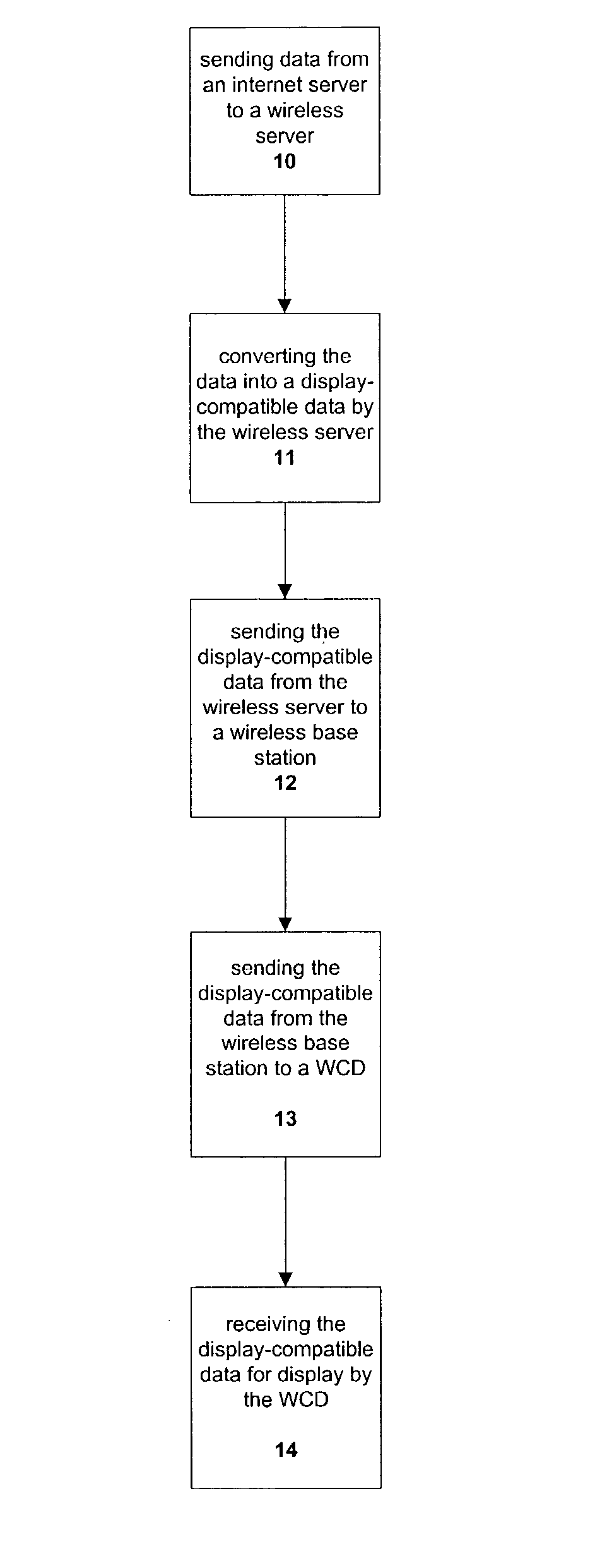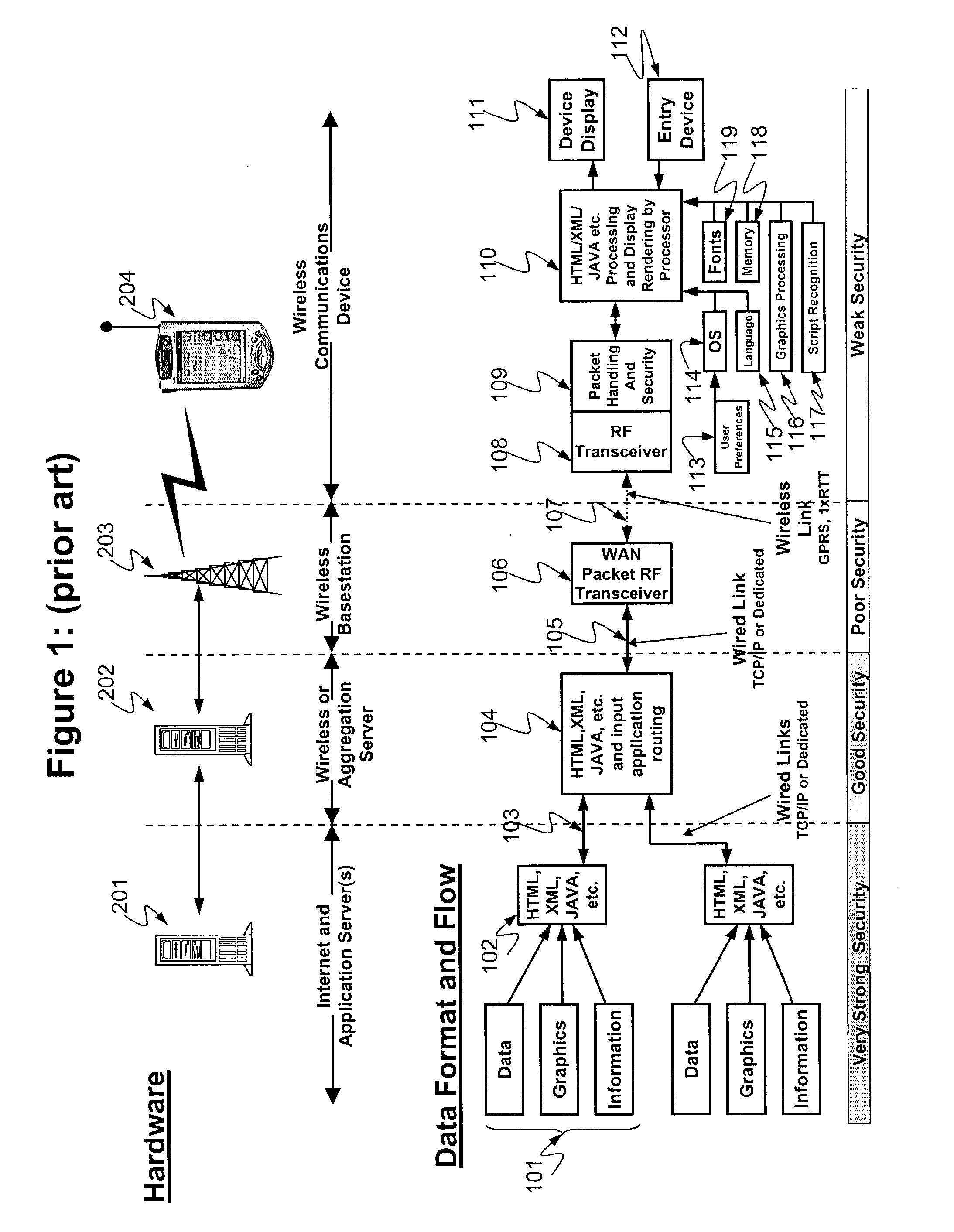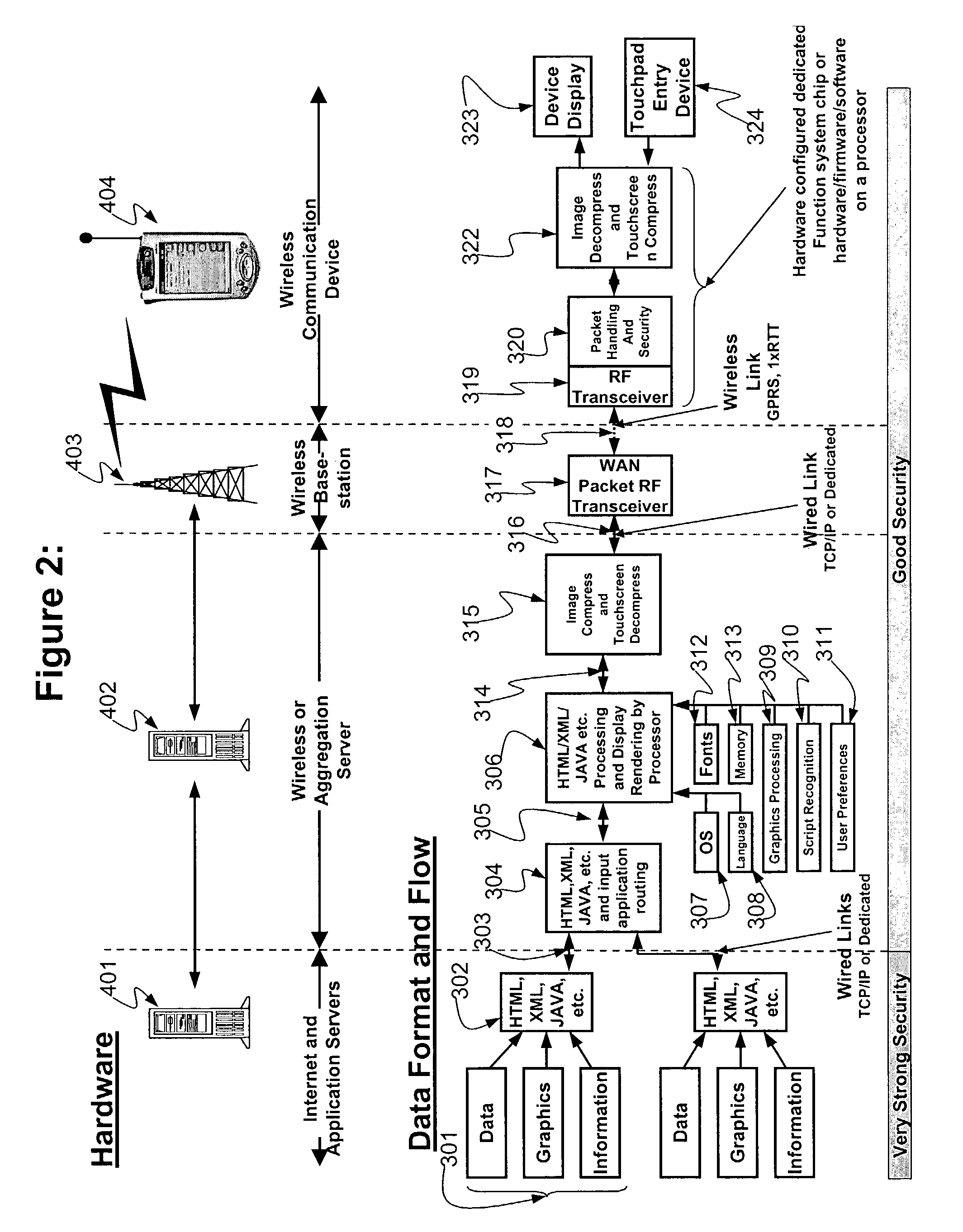The presence of such a processor able to perform rendering of internet languages, and an associated
operating system, in the WCD then makes the WCD costly and power hungry, requiring large batteries, or frequent charging.
The cost, size and sophistication of
present day WCDs prevents them from being easily adopted by consumers, and thus prevents the so-called
wireless internet from evolving beyond a limited market of high-end users and into the
mass marketplace.
Furthermore, current day devices and applications that users and businesses desire to introduce to a wireless environment have a constant limitation as WCDs that are already deployed may not be capable of rendering information or
graphics or data in the newer formats of evolving and ever-changing languages.
Unlike computers that are wired into
the internet, it is impractical to
upgrade wireless devices over a network.
So the current day architecture and method for connecting WCDs to
the internet not only results in a costly and power hungry device, it also results in deployed devices that can become quickly obsolete at worst, or at best require a significant investment in time and effort on the part of the users to
upgrade their WCDs.
Still further, the rollout of new
mass consumer applications intended to communicate with a wide variety of WCDs is severely hampered and slowed as the applications providers have to perform extensive regression tests for all of the various types of WCD capabilities that may exist in their user base.
A further problem exists with the current architecture and structure of WCDs and the method of
interfacing the network and other wired computers to those WCDs.
The problem is that of a user communicating from the WCD to the network in a manner which the network can tolerate.
This creates a serious problem for wireless portable devices which typically cannot tolerate a keyboard.
This puts a large burden on
processing requirements on a WCD, as script recognition is a very demanding computing task.
This drives up the cost and
power consumption of WCDs designed in the current day method and embedded in the current day communications architecture even more.
A further problem with current day WCDs and WCD communications methods is the lack of unified security.
A particular problem exists with the WCD itself, which typically has an
operating system.
Because WCDs with operating systems typically hold and store sensitive information (such as
bank account numbers, passwords and so on), and because WCDs are relatively easy to
attack in isolation, and further because the typical WCD and WCD
communications system today does not offer WCD-to-
Server unified security, WCDs and their associated communications systems today are not suitable for applications requiring strong security, such as banking and commerce applications.
Finally, the cost and usage complexities of existing WCDs prevent the use of a deployment business model wherein the deployment of WCDs to enhance business and commerce transactions in a mobile or wireless environment is sponsored by a business, except in the most cost insensitive, and thus non-
consumer, applications.
For example, it is impractical today for a
bank to pay for the deployment of a WCD to each of its customers, even though once deployed such a wireless communication method may substantially benefit both the
bank and the customer, because typical WCDs capable of handling something as simple as checking a
bank account balance cost hundreds of dollars.
Therefore the deployment of
consumer wireless internet applications is further hampered by the fact that businesses must generally wait for their customer base to be self-motivated to purchase multi-hundred dollar devices on their own.
Additionally, since the image stored in memory might contain sensitive information, such as a
bank account balance or other personal data, the wireless server could use information stored on the target WCD or a public key
system to encrypt the image with a robust
encryption such that if the image transmission to the WCD were intercepted, it would be difficult or impossible to
decipher.
 Login to View More
Login to View More  Login to View More
Login to View More 


